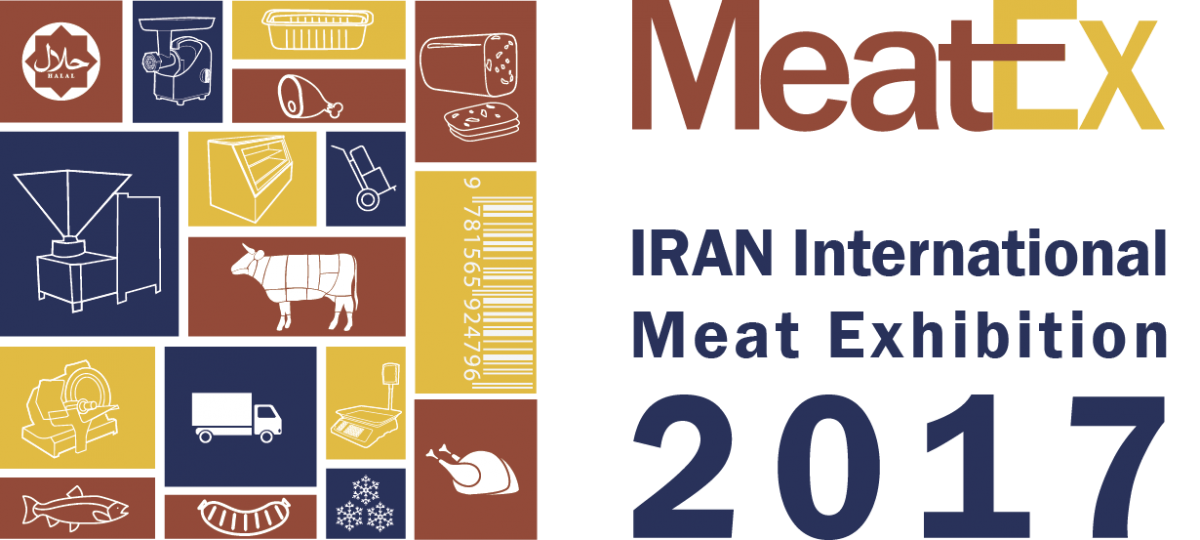Tehran is scheduled to host the Second International Exhibition of Meat and Related Industries known as Meatex on Nov. 13.
According to ILNA, over 120 domestic firms and companies from Ukraine, Brazil, Mongolia, Lithuania, Italy, Denmark, Belgium, the UAE, Australia, Germany, South Korea, China, Spain and the Netherlands are expected to showcase their latest products, machinery, equipment and services at the four-day event, which is to be held at Tehran’s International Fairground.
The exhibition is the only specialized event for halal meat, protein products and related industries in the world and the only meat industry exhibition in the Middle East.
“It is aimed at providing Iran’s processed meat industry with domestic and foreign investments, supplying Iranian halal products to Muslim countries, especially in the Middle East the Commonwealth of Independent States and East European countries, and transferring technology and know-how into Iran,” Hormoz Mahbod, executive manager of the exhibition, said.
The global halal industry is worth $3.7 trillion. Over 2 billion Muslims live in over 100 countries, however 80% of halal products are produced in non-Muslim countries. Iran’s share of the global halal market is meager.
According to Abolhassan Khalili, former secretary-general of the Federation of Iranian Food Industry Associations, Iran’s share stands at $250-300 million.
This is while Abdolhossein Fakhari, secretary-general of Global Halal Institute, puts it as little as $5-6 million, way below Khalili’s estimate.
The difference can be explained by the fact that although 100% of Iran’s food exports are halal, not all exports are made under the official halal brand.
Halal is an Arabic word meaning “permissible” or “lawful”, the opposite being “haram”, which means “forbidden” or “unlawful”. The two terms govern almost every aspect of Muslims’ lives, including food, clothing, banking and traveling.
In recent years, halal has evolved in meaning to encompass a range of hygienic and high-quality food products, cosmetics, personal care products, leather goods and food ingredients.
Under the definition proposed by the United Nations Food and Agriculture Organization in 1997, halal food incorporates not only production and processing procedures, but also the manpower, transport, storage and equipment used in different stages.
Technavio’s market research analysts expect the global halal food market to multiply at a speedy rate, with a compound annual growth rate of more than 14% during 2015-19.
Initially, halal food was consumed only by Muslims, but now they are favored globally by people of all religions and ethnic backgrounds, as they are known for being safe, hygienic and of high quality.
With the rise in demand for halal food products, producers from non-Muslim countries such as the US, Brazil and Australia are keen to tap this opportunity.
According to the Islamic Chamber of Research and Information Center, 1,500 food companies have obtained halal brand licenses in Iran.
According to the official website of the expo, Iranmeatex.com, Iran’s annual meat production stands at 3.26 million tons, with red meat having a 29% share (934,000 tons), poultry 51% (1.66 million tons) and seafood 20% (664,000 tons).
Iranians consume an average of 24.9 kilograms of poultry meat per year, while per capita consumption of red meat and seafood stands at 15.25 kg and 8.5 kg respectively.
Red meat has the lion’s share in Iran’s raw meat exports, as around 53,000 tons are exported annually. Seafood has a 34% share in meat exports with 45,000 tons per annum, while poultry exports constitute the rest 25% (33,000 tons).
As for imports, 82% of the total annual meat imports, adding up to 203,000 tons, pertain to red meat and the remaining 18% to poultry (45,000 tons).
Afghanistan, Armenia, Azerbaijan, China, Cambodia, Iraq, Kuwait, Malaysia, Tajikistan, Thailand, Turkmenistan, Turkey, Ukraine, the UAE and Vietnam are the main customers of Iran’s meat products.
Iran mainly imports meat from Argentina, Armenia, Australia, Brazil, China, Denmark, Ghana, Greece, Hong Kong, India, Indonesia, Ireland, Italy, New Zealand, Norway, Oman, Pakistan, Russia, South Korea, Thailand and Vietnam.
Iran is a major producer of processed meat, such as sausages and bologna, in the region with exports to many countries. The country also exports meat processing machinery.
Per capita processed meat consumption in the country is between 5 and 5.5 kilograms.
The global production of meat products stood at close to 320 million tons in 2016, up by 0.2% year-on-year. The value of the market was estimated at $714 billion in the same year, while it is predicted to reach $1.5 billion by 2022 to register a 14% growth.
In Iran, the meat industry has helped create over 20,000 direct and 75,000 indirect jobs.


